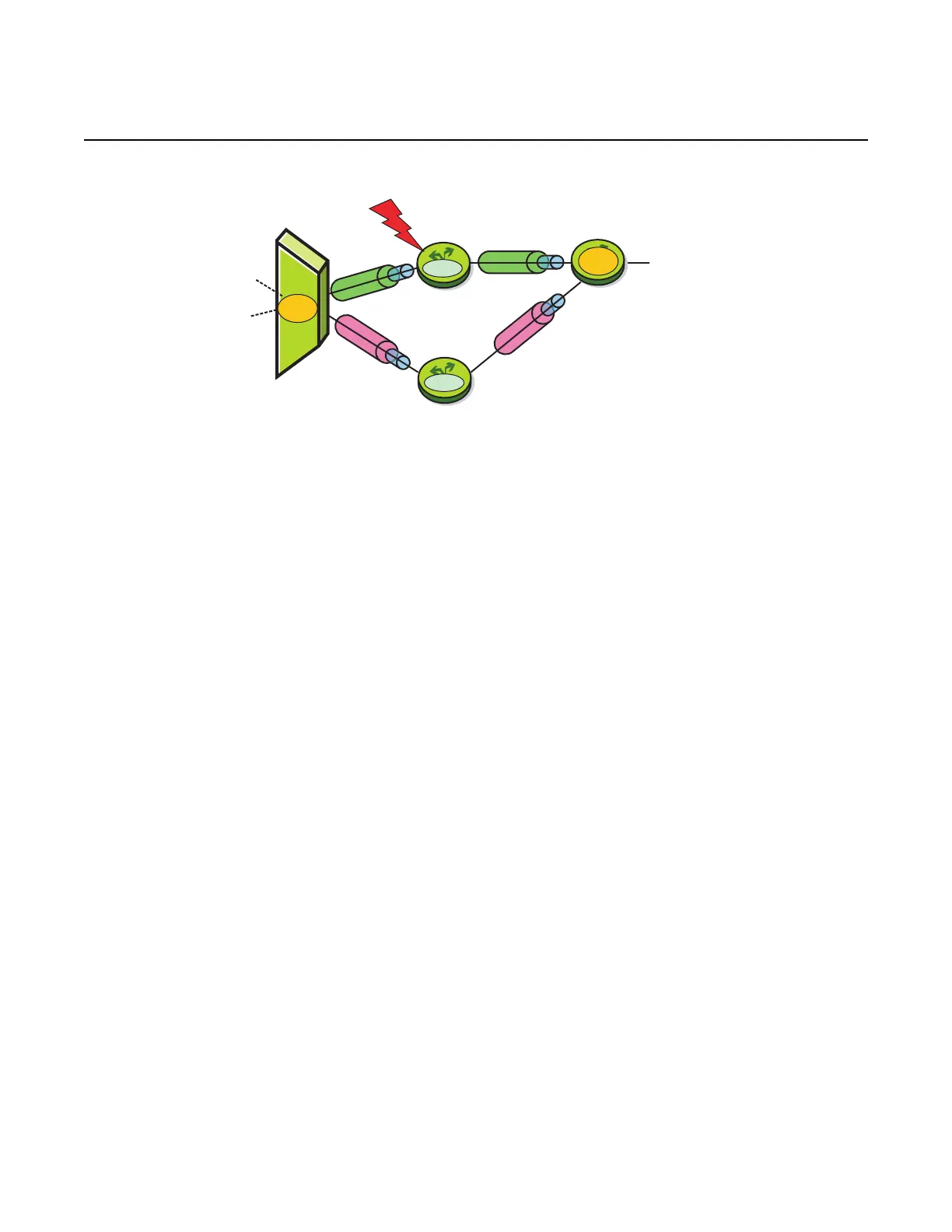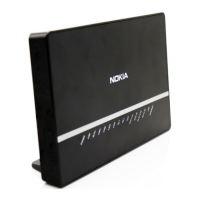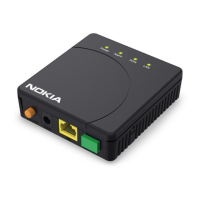FD 100/320Gbps NT and FX NT IHub Services Guide Virtual Leased Line Services
Issue: 13 3HH-11985-AAAA-TQZZA 109
Figure 10 Pseudo wire
As shown in Figure 10, a Pseudo-Wire has been established between the ISAM and
PE1. The MPLS tunnel passes through Router R1 as this is the shortest path
between the ISAM and PE1. When LSR R1 fails, the ISAM is informed via IGP
routing protocol messages. The ISAM will look for an alternative Label Switched
Path, i.e the tunnel will swap from LSP1.1 (R1,PE1) to LSP1.2 (R2,PE1) to reach the
router PE1 where the Pseudo-Wire terminates. This alternative path is chosen based
on the IGP shortest path as LDP signaling is used to set up LSPs.
However, true redundancy for an Epipe through support of active/standby
Pseudo-Wires is not available at present. When required, it is advised to use the
VPLS service (with learning disabled) to emulate an Epipe with active/standby PW
behavior.
4.3 VLL Service Considerations
This section describes various general service features and any special capabilities
or considerations as they relate to VLL services.
4.3.1 Configuring SDPs
The most basic SDPs must have the following:
• A locally unique SDP identification (ID) number.
• The system IP address of the originating and far-end routers.
• An SDP encapsulation type: MPLS.
The simple three-node network described in Figure 11 shows three MPLS SDPs
defined between the nodes. These SDPs connect VPLS1 and VPLS2 instances that
are defined in the three nodes.
ISAM
R1
R2
PE1
LSP1.1
LSP1.2
LSR
LSR
VLL/
VPLS
VLL/
VPLS
IP1

